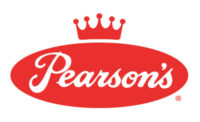Rick and Dave Drehobl have never been afraid of taking chances.
As third generation owners of the Skokie, Ill.-based Georgia Nut Co., they chose to move beyond roasting and selling nuts — a concept originated by their grandmother, Rose Musso, more than 70 years ago — and start making candy.
There was just one problem: They had little confectionery experience. But with their business knowledge and entrepreneurial instinct, the Drehobls grew the family company to a $70-million operation by 2007, with capabilities including sugar panning, enrobing, chocolate panning, and roasting and kettle cooking.
Around that time — after making headway as a bulk candy and industrial ingredient supplier — the Drehobls tried their hands at producing and selling branded items, with the goal of extending Georgia Nut’s reach outside a circle of food manufacturers and local buyers.
In 2004, the company acquired the Atlanta-based brittle plant of Sophie Mae Co., which had available a namesake label and the rights to nostalgic brands Slo-Poke, Kits and BB Bats. A year later, the company acquired Milwaukee-based Chocolate House, known for its Whipped Creme products.
With a handful of brands, including Georgia Nut, the company planned to push each one over the $5-million mark in five years. But then the Great Recession hit, and without the recognition of a major name, shelf space was hard to come by.
“Getting things to stick was not easy to do,” says Rick, the company’s president. He also noted marketing and maintaining the brands proved to be an expensive undertaking.
After a tough period, the Drehobls decided Georgia Nut’s focus should remain where it had been for years: making products and ingredients for other companies. Georgia Nut sold Sophie Mae and Slo Poke, brands now owned by Atkinson Candy Co. Chocolate House operations were consolidated into Georgia Nut’s Skokie facility and the brand was discontinued.
At-a-Glance: Georgia Nut Co.
Headquarters: Skokie, Ill.
Plant: Main plant, 130,000 sq. ft.; Distribution center, 180,000 sq. ft.; Innovation Center, 8,000 sq. ft.
Employees: 420
Products: Candy-coated gems, chocolate clusters, coated pretzels, malt balls, roasted nuts, - capabilities soft and hard sugar shelling, panning, roasting, kettle cooking, packaging
Sales: $140 million
Management team: Dave Drehobl, ceo; Rick Drehobl, president; Jack Arends, director of finance; Kurt Thorsen, v.p. of business development; John Drehobl, director of sales and marketing; Mike Drehobl, director of engineering; Steve Chmura, director of operations; Tony Musso, director of purchasing; Josh Liebman, director of special projects; Patrick O’Shea, director of quality assurance and technical service; Richard Hauber, R&D manager.
“We’re just going to stay behind the scenes and do what we do best,” says Dave, Georgia Nut’s ceo.
Taking a U-turn seems to have worked. Since shifting away from branding, Georgia Nut has doubled revenue to $140 million over the last decade. Business is split equally between co-manufacturing; supplying retailers with bulk sweets; and preparing industrial ingredients. Rick says the company’s bulk operations remain steady, while “significant” co-manufacturing opportunities continue to present themselves.
The industrial ingredient side, however, has experienced “consistent and aggressive growth,” says John Drehobl, director of sales and marketing and Rick’s son, thanks to a growing need for inclusions in snack mixes, energy bars and ice cream.
Those inclusions often come in the form of “gems,” chocolate lentils coated in a candy shell and the jewel in Georgia Nut’s crown, so to speak. The company produces several iterations of the standard sweet, including Peppermint Bark, Strawberry Shortcake, S’mores and Cookie Butter.
“We like to take classic candies and take them to another level,” John says.
Understanding that creativity is the key to success in the competitive confectionery industry, the Drehobls have made it a priority. Georgia Nut has invested $250,000 in a dedicated research and development facility, a rarity among mid-sized confectionery operations.
In April 2016, Georgia Nut moved R&D operations from its 130,000-sq.-ft. manufacturing plant to the neighboring Rose F. Musso Innovation Center, an 8,000-sq.-ft. facility named for the company’s late matriarch.
With roughly 3,000 sq. ft. of laboratory space, the Innovation Center gives R&D Manager Richard Hauber and his team of food technologists enough space to create without halting production for costly trial runs.
“We needed more room to just work efficiently, and we needed a way to model things without going into the plant all the time,” Hauber says. “I’m thrilled we finally got it.”
The center has small-batch equipment that can recreate all processes available at the main production facility. It also has areas for brainstorming sessions, where co-manufacturing clients and other customers can develop ideas with help from Georgia Nut technologists. In fact, about 85 percent of the center’s projects are client-driven, Hauber says.
In the remaining time, Georgia Nut’s food scientists develop new techniques and work to keep up with market trends. Hauber noted he and his team have been developing natural colors for the gems’ sugar-shell coatings and have pursued organic and non-GMO certifications because of greater demand for all-natural, organic and “clean label” sweets.
“The market wants health, but they want decadence, too,” Hauber says.
Georgia Nut may have found a fitting solution. In hopes of seizing opportunities in the United States’ booming dietary supplement market — which hit $27 billion in 2016, according to Euromonitor — the company is formulating its signature gems with probiotics, microorganisms that promote gastrointestinal health. It’s an effort that requires coordinating multiple facets, including research, quality and safety testing, manufacturing and packaging.
Chocolate serves as an ideal carrier, the Drehobls say, because its fat content protects the bacteria from stomach acids and can offer a more appealing taste profile than gummies, especially for adults seeking an indulgent experience.
“There seems to be a high level of interest in using chocolate as a carrier,” Rick says.
Georgia Nut has tested two 1.5-gram gems with one billion colony forming units (CFUs). John says shelf life studies have shown stability and maintenance of the CFUs for 18 months, which may be attributed, in part, to the sugar coating.
With the favorable studies, the company hopes to bring chocolates with probiotics to the market in 2017. The company is also pursuing Current Good Manufacturing Practice (CGMP) certification through the U.S. Food and Drug Administration to be in compliance with the agency’s Title 21 CFR Part 111 certification, which denotes good manufacturing, packaging, labeling and holding operations for dietary supplements.
“We always try to figure out the best way to create value,” Dave says.
It’ll be up to Kurt Thorsen, newly promoted v.p. of business development, to demonstrate that to customers. Having almost a decade of sales experience at Georgia Nut under his belt, Thorsen has been tasked with cultivating growth, particularly in the dietary supplement arena.
And that’s just fine with the 30-year food industry veteran.
“I’ve always enjoyed the creative aspect” of market development, he says. Thorsen also pointed to the benefits of using chocolate as a delivery mechanism for probiotics.
“It’s indulgent, and dark chocolate has a health halo behind it already,” he says. “It’s in the competitive price zone.”
While Thorsen’s focus is new business, John will be responsible for nurturing Georgia Nut’s established connections and operations. Named director of sales and marketing in December, John will concentrate on sales, marketing, R&D, supply chain and demand planning.
John started in Georgia Nut’s sales division in 2008, but he was first exposed to the manufacturing side of the business. After college, he took a “year-long lap” of the plant, learning its processes before getting experience in sales and marketing.
He says having an understanding of the plant’s capabilities has been “invaluable” from a sales perspective.
“It turned out to be well worth the early mornings and late nights,” he says.
And there’s plenty to learn. Georgia Nut’s main plant was bustling on a Friday in late December.
Steve Chmura, Georgia Nut’s director of operations, and Mike Drehobl, director of engineering, led a group through room after room of drop rolling, panning and polishing equipment, pointing out the company’s recent investments and allergen containment measures.
Georgia Nut has production rooms that are peanut- and tree nut-free, and allergen control curtains separate three 60-ft. enrobers, manufactured by National and Sollich. Peanut clusters, double-dipped peanuts and yogurt pretzels were among the treats spilling off the belt and into cardboard boxes.
Mike noted Georgia Nut will have another 100-ft. Sollich enrober operational by March. With a 50-in. belt, the machine will be capable of producing 800 pounds of enrobed confections an hour. Meanwhile, in a neighboring room, 16 panners were polishing chocolate-coated pieces, while eight automated belt coaters, as well as a Dumoulin automated coater, were tumbling others.
Georgia Nut’s packaging facility in nearby Niles was also busy, sealing candy-coated peanuts into pillow bags and snack mixes into stand-up pouches for co-manufacturing clients. Until recently, the 180,000-sq.-ft. facility served as a warehouse, but Georgia Nut moved packaging operations there to support food safety and future automation initiatives.
Between innovation, manufacturing and managing clients’ needs, Georgia Nut has plenty to juggle, but the Drehobls wouldn’t have it any other way.
“This company has never suffered from a lack of opportunity,” Rick says. “It’s about being able to capitalize on it.”



























